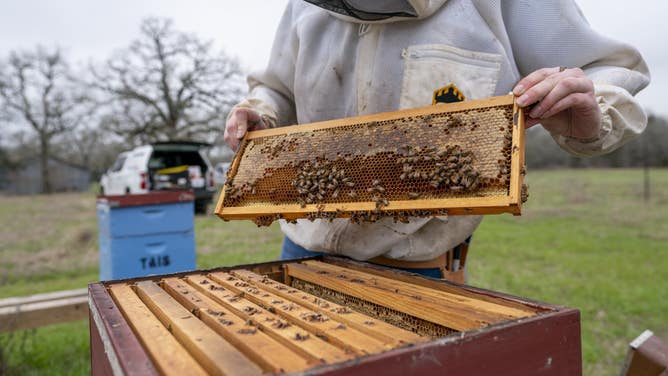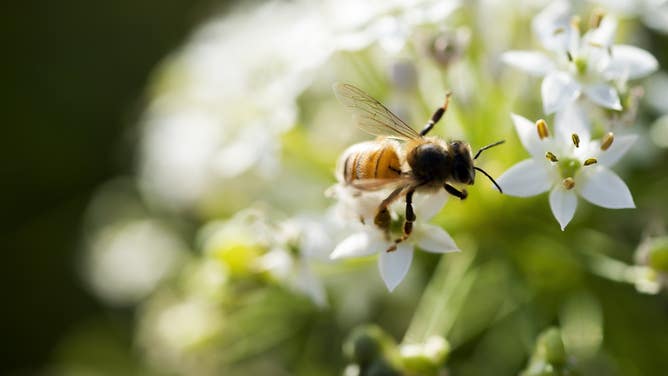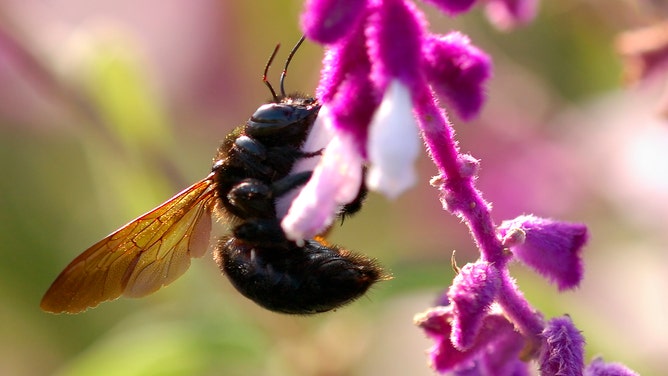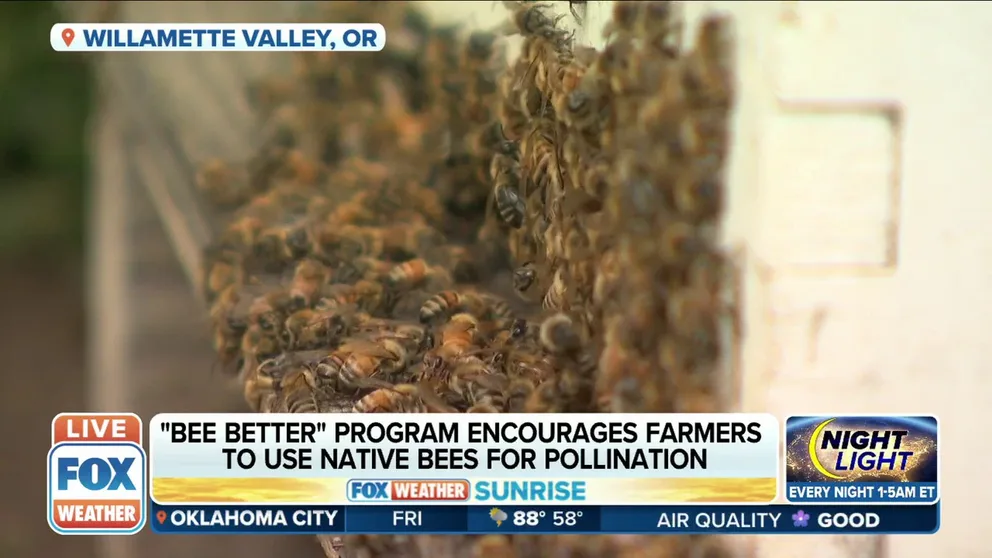Where do bees go in the winter?
Some bees go at it alone and hibernate during winter, while others push through the months of cold weather by staying warm with their colony.
Native bumblebees face extinction
FOX Weather's Max Gorden found a farmer changing the way he does business to prevent the America's bumblebees from going extinct.
When temperatures drop, the usual buzzing of bees disappears.
Where do they go? How do they survive winter – or do they survive at all? The answer varies and actually depends on the bees’ social lives.
From social honeybees to solitary carpenter bees, the way the insects survive greatly depends on their colony or solely on themselves.
Social

Texas Apiary Inspection Service on March 5, 2021.
(Laura McKenzie/Texas A&M AgriLife Marketing and Communications / FOX Weather)
Social bees, such as honeybees, tend to live in large colonies in hives. Honeybees, in particular, live in colonies containing a queen and between 10,000 and 50,000 workers.
"They live intricately together," said Juliana Rangel, associate professor of apiculture in the Department of Entomology at Texas A&M University. "Imagine each little bee acting as like a cell in a body, and everyone is part of that body, and the body moves on its own."
One of the abilities of this colony is the ability to thermoregulate.

A colony of bees.
(Michael Miller/Texas A&M AgriLife Marketing and Communications / FOX Weather)
According to Rangel, as soon as temperatures drop below 45-50 degrees, the bees will create a cluster and move together to form into a ball. Then, they start shivering to produce enough body heat to stay warm – sometimes 20 degrees warmer than the temperature outside.
The honeybees will remain in this ball throughout the entire winter. Rangel said they will not leave the colony to forage for food and will instead survive off of the honey stores in their hive.

Bee on a honeycomb.
(Lokman Ilhan / Anadolu Agency / FOX Weather)
USDA APPROVES VACCINE FOR HONEYBEES, A FIRST IN THE US
Also, bee colonies, particularly those living in tree cavities, will winterize their hives as the temperatures drop. According to Rangel, the bees will seal all crevices and holes in the cavity with a special glue they produce.
She added that the bee will also choose homes with smaller openings. In addition to it being a better line of defense, the smaller opening will ensure that less cold air will enter the hive during winter months.
Semi-social bees

A bee on a flower. December 2, 2021.
(Texas A&M AgriLife Marketing and Communications / FOX Weather)
Bumblebees and other bee species are considered semi-social in that they move back and forth between leading social and solitary life stages.
In the winter, bumblebees live as solitary individuals. Without the help of a colony, they survive winter by creating little burrows for themselves underground and remaining dormant for months.
"Their physiology just goes to the very lowest point of survivorship," Rangel said. "They're not dead. They're just hibernating to withstand the cold temperature."
WHERE IS THE WESTERN BUMBLEBEE?
Come spring, the warmer temperature cues the bees to reactivate their bodies again. They leave their burrows and make new colonies of between 100 and 200 individuals.
They become social individuals until cooler temperatures return in the fall.
Solitary bees

Carpenter bee
(Ron Reznick / VW Pics / Universal Images Group / FOX Weather)
Mason bees, carpenter bees and other bee species live their entire lives on their own.
According to Rangel, these bees either survive winter by being dormant underground – similar to the survival mechanism of bumblebees – or die within a year.
